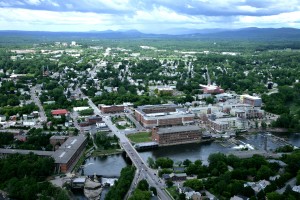 When someone says that a town or a city is “built out,” what does that mean? It often means simply that the speaker doesn’t want any more people moving in – even though it might be possible to design more space, in keeping with local standards, that would accommodate more people.
When someone says that a town or a city is “built out,” what does that mean? It often means simply that the speaker doesn’t want any more people moving in – even though it might be possible to design more space, in keeping with local standards, that would accommodate more people.
The common claim that a city has run out of room reflects not a physical reality, but rather, an exclusionary prejudice, as Emily Badger suggests in a thought-provoking piece in the Washington Post. She points to widely varying population densities of major “First World” cities (Seattle, 3,000 people per square mile; New York, 4,500; Paris, 9,500; London, 14,600). How can anyone in San Francisco, even with its topographical challenges, argue that that city is “built out” at a mere 5,400 people per square mile? In fact, according a Berkeley economist, the city could accommodate 30-40 percent more people without losing its character.
Building higher and shrinking parking lots can seem reasonable as planning options, but there are limits. In Burlington (2,730 people per square mile), for example, any building higher than about 12 stories would likely be seen as excessive, and no one is ready to enforce a dramatic reduction in vehicles plying the city’s roads. There is such a thing as overcrowding, too (HUD’s so-called Keating memo calls for a limit of two people per bedroom), but of course most American communities are nowhere near their limit.
The most densely populated municipality in Vermont is undoubtedly Winooski , about 4,800 people per square mile.
And Winooski, when you meander through it, doesn’t come across as particularly dense – much of its 1.5 square miles is occupied by single-family lots, after all. It could get denser and still be less so than LA (6,000 people per square mile) or Madrid (12,100) – never mind Mexico City (25,100) or Jakarta (24,500).
Nationally, exclusionary land-use practices have had the effect of holding down housing supply and pushing up housing prices. Consider California, where housing prices began to soar above those in the rest of the country starting around 1970. One reason California diverged, according to an legislative analysis that came out earlier this year, is housing construction has been limited – by community resistance, environmental policies and other factors – in coastal urban areas. That has driven up prices there and inland as well.
The legislative analyst called for policy changes that would lead to significantly more housing along the coast. Here again, the suggested remedy for unaffordability was a familiar one: increase the housing supply. But does anyone believe that can be left simply to market forces?
Moreover, merely eliminating exclusionary policies and increasing density, while favoring more affordability, aren’t necessarily sufficient to promote inclusiveness, or integration. The pro-density strategy has to be combined with affirmatively fair housing, as Jamaal Green argues in this Shelterforce article.
